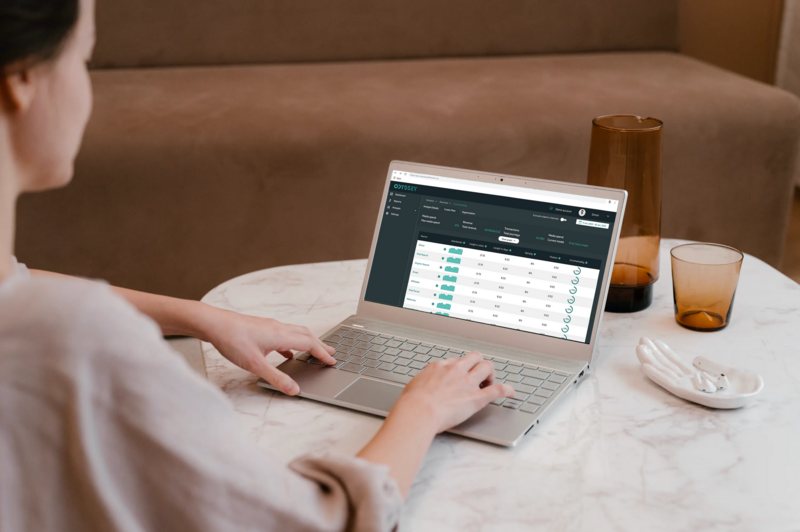How Odyssey uses Google Analytics as a tracking source
One of the biggest benefits of Odyssey Attribution is that we are able to extract the raw data from Google Analytics. How, you are asking? Let us explain
Two weeks ago I wrote that 2020 probably won’t be the year in which marketing attribution (multi-touch attribution) made its big breakthrough. The most important reasons for the slow adaptation of marketing attribution among marketers are complexity, a misunderstanding about what AI could do and Google’s domination of the digital marketing industry in general. Marketing attribution is not rocket science though, so let me try to explain how we approach it within Odyssey and basically, how any e-commerce company could start with it.
Basically, marketing attribution is nothing more than common sense, combined with a lot of data crunching and continuously running experiments. In this blog, I’ll be focussing on common sense.
Imagine that you’re an e-commerce company with 10 million euros of revenue in 2019. Your average order value was 100 euros, which means that you had 100.000 transactions. This means that you had 100,000 converting customer journeys.
In order to get these 100.000 transactions you had to invest 2 million euros in online advertising divided among several online channels like paid search, paid social, display and affiliate. This is 20 euros or 20% of average media spend per transaction.
The big questions when it comes to marketing attribution are now:
Another question that’s being asked a lot is:
“what is the incrementality of this traffic source?”
Asking these questions is much easier than answering them…
Before, we can even answering these questions, we have to find a way to compare traffic sources with each other in the first place.
Let’s get back to our example above and imagine that from our 100.000 transactions, in 10.000 of them paid search was involved in the customer journey and in 10.000 customer journeys paid social was involved (overlap is possible). How can we compare the value of our paid search channel with the value of our paid social channel?
The first metric we use in Odyssey is the average customer journey length. Ideally, you want your customers to buy your products as quickly as possible, because more touchpoints mean more costs. If customer journeys in which paid search was involved had an average customer journey length of 4 touchpoints and in the case of paid social this was 5, you could conclude that paid search is more valuable to you than paid social.
But there are more metrics to compare your traffic sources on. Let’s get back to the example mentioned above. If the average customer journey length in case paid search is involved, is 4, how many of these 4 touchpoints are owned by paid search? In case it’s 4, it means that paid search owns the entire customer journey and therefore should receive all the credits for these transactions. However, if paid search only owns 1 or 2 touchpoints, it means that they should only be credited with 25 or 50% of the value of these transactions. This is what we call the “density” of a traffic source.
Therefore, although paid social has an average customer journey length of 5, it can still be more valuable (incremental) than paid search (average length = 4), in case its density is higher.
But this isn’t all; there’s a third KPI that is important. This is the average position of a touchpoint in a customer journey and here it gets a little more complicated, because you have to decide if you’re going to value different positions in the customer journey differently. For example, is the first touchpoint in the journey worth more or less than the last touchpoint? Would this be the same for all your product categories or do you want to differentiate between them? And would this be different for a new customer compared to a returning customer?
This is why we always say that starting with Odyssey (or any other multi-touch attribution tool) is just the beginning; not the end. And as you can see, there are quite some steps required, before you have a proper attribution model in place. Therefore, next week, I’ll explain how you could include costs and revenue in order to answer the key attribution questions and start creating your attribution model.
How Odyssey uses Google Analytics as a tracking source
One of the biggest benefits of Odyssey Attribution is that we are able to extract the raw data from Google Analytics. How, you are asking? Let us explain
What if we could re-start affiliate marketing?
The lack of a proper attribution model within the industry is actually more or less how we got to the first version of Odyssey. However, there are more topics in which I believe the affiliate industry is completely missing the point.
How to include costs and revenue in your attribution model?
It's important to see which marketing channels drive most of the value, but if these channels cost you a fortune, you don't want to spend all your marketing budget there. Therefore, including both costs and revenue in your MTA model is essential.



